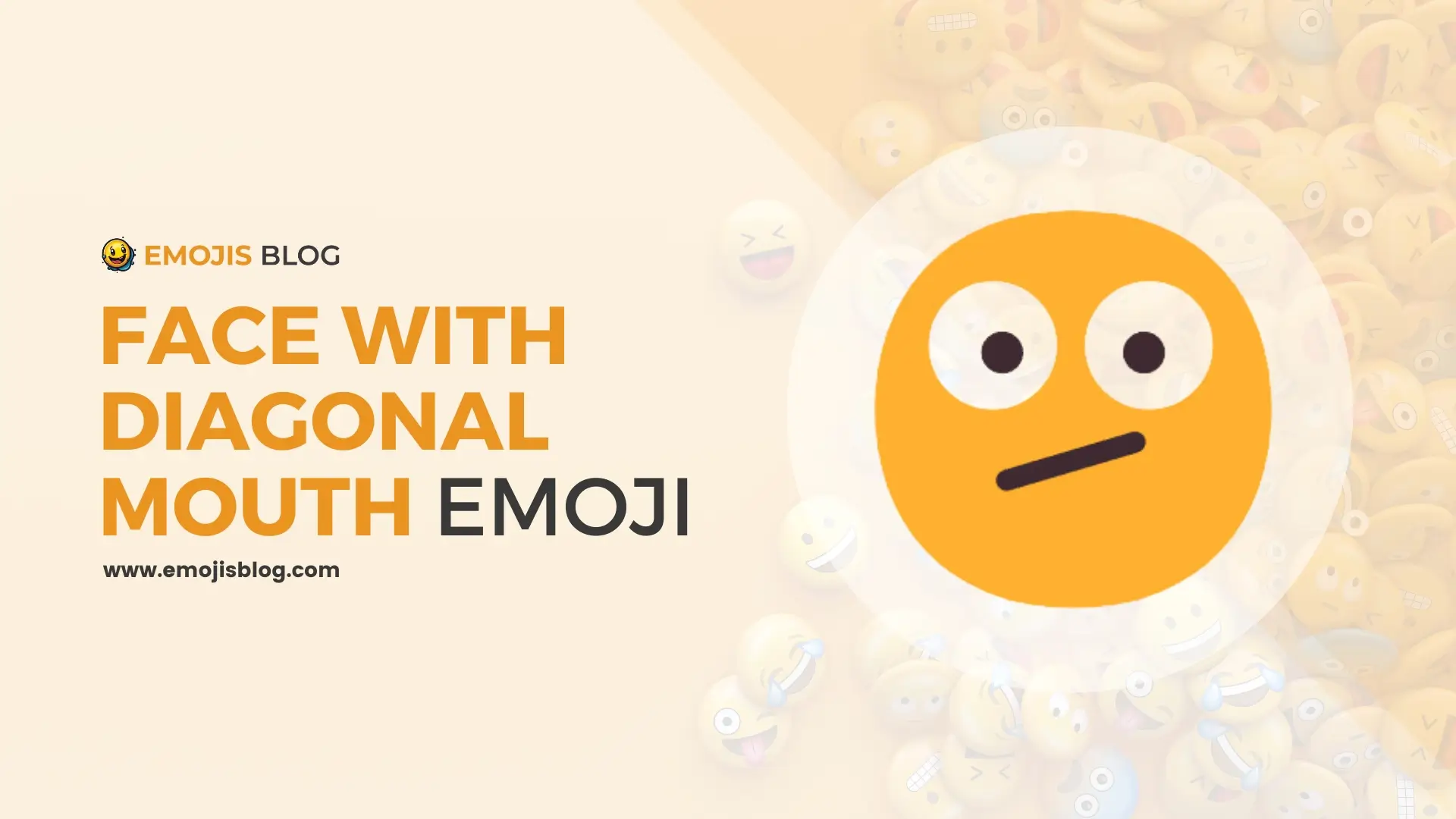What Does The Face With Diagonal Mouth Emoji 🫤 Mean?
🫤
Face With Diagonal Mouth Emoji 🫤 Meaning
The “Face With Diagonal Mouth” emoji (🫤) represents an ambiguous and nuanced facial expression, often interpreted to convey feelings of ambivalence, uncertainty, mild frustration, or sarcasm. The yellow face with its distinctive zigzag mouth and simple dot eyes captures a range of emotions where words might fall short, making it a versatile tool in digital communication. Its usage varies depending on context, typically signaling a noncommittal attitude, puzzlement, or minor discontent, allowing users to express complex emotional states in a concise and visually engaging manner.
Technical Information
| Attribute | Details |
|---|---|
| Unicode Name | Face with Diagonal Mouth |
| Unicode Codepoint | U+1FAE4 |
| Shortcode | :face_with_diagonal_mouth: |
| Category | Smileys & Emotion |
| Subcategory | Face Concerned |
| Introduced in Version | Unicode 14.0 |
| Emoji Version | Emoji 14.0 |
| Approved Date | September 2021 |
| Hex Code | 0x1FAE4 |
| Decimal Code | 129764 |
| Platforms Supported | iOS, Android, Windows, macOS, Linux, Web |
| Common Keywords | ambivalence, indifference, uncertainty, meh |
| Representation | Yellow face with a zigzag, diagonal mouth and small dot eyes. |
Understanding the “Face With Diagonal Mouth” Emoji (🫤)
Emojis have become an integral part of digital communication, adding nuances to text that words alone sometimes fail to convey. One such emoji is the “Face With Diagonal Mouth” (🫤). This emoji’s unique expression can sometimes puzzle users, making them wonder about its exact meaning and appropriate usage. This article delves into the various interpretations and contexts of the “Face With Diagonal Mouth” emoji.
Introduction to Emojis
Emojis are small digital icons or images used to express ideas, emotions, or concepts in electronic communication. Originating in Japan in the late 1990s, they have since become a global phenomenon, enriching the way people communicate online. With thousands of emojis available, each one serves a specific purpose, conveying a range of emotions from happiness and sadness to confusion and frustration.
Description of the “Face With Diagonal Mouth” Emoji
The “Face With Diagonal Mouth” emoji (🫤) features a yellow face with a diagonal, zigzag-like mouth. The eyes are usually depicted as small, circular dots. This peculiar combination of features gives the emoji an ambiguous expression that can be interpreted in various ways.
Common Interpretations
- Ambivalence or Indifference: The diagonal mouth can signify a lack of strong feelings or an indifferent attitude. It’s often used when the sender wants to convey a sense of “meh” or “whatever.”
- Uncertainty or Confusion: The unusual mouth shape can also suggest uncertainty or confusion. It can be used when the sender is unsure about something or finds a situation puzzling.
- Mild Frustration or Discontent: In some contexts, the emoji can reflect mild frustration or discontent, especially when something is mildly annoying or not going as planned.
- Sarcasm or Irony: Given its ambiguous expression, the “Face With Diagonal Mouth” emoji can also be used sarcastically or ironically to imply that the sender doesn’t entirely mean what they’re saying.
Usage Examples
To better understand how to use the “Face With Diagonal Mouth” emoji, here are a few examples:
- Ambivalence: “I guess I’ll go to the party… 🫤”
- Uncertainty: “Not sure if I got the instructions right 🫤”
- Mild Frustration: “Another meeting got cancelled last minute 🫤”
- Sarcasm: “Oh, great. Another rainy day 🫤”
Comparison with Similar Emojis
Several other emojis share a somewhat similar vibe to the “Face With Diagonal Mouth” emoji. Here are a few and how they differ:
- 😐 Neutral Face: Represents a neutral or expressionless face, often used to convey a lack of emotion or reaction.
- 😕 Confused Face: Depicts confusion or a lack of understanding more explicitly than the diagonal mouth.
- 🙄 Face With Rolling Eyes: Used to express sarcasm, disdain, or annoyance more strongly.
Cultural and Contextual Variations
The interpretation of emojis can vary across cultures and contexts. While the “Face With Diagonal Mouth” might generally convey ambivalence or mild frustration, its meaning can change depending on the conversation and the relationship between the people communicating. Emojis often rely on context for their full meaning, making it essential to consider the surrounding text and the nature of the conversation.
Conclusion
The “Face With Diagonal Mouth” emoji (🫤) is a versatile and ambiguous symbol in digital communication. Its unique expression allows it to convey a range of emotions, from indifference and uncertainty to mild frustration and sarcasm. Understanding its various interpretations and appropriate contexts can enhance your digital communication, making your messages more expressive and nuanced. As with all emojis, the key to effective usage lies in considering the context and the relationship between the communicators.

